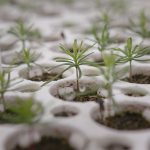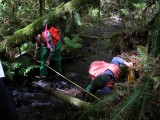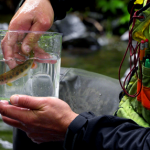VIDEO LIBRARY
Washington’s working foresters will continue replanting trees, ensuring an enduring cycle of wood products for a generation to come.

Washington’s working foresters will continue replanting trees, ensuring an enduring cycle of wood products for a generation to come.

Virtual Forest Tour with Environmental Educator Kelly Stanley
Did you ever wonder how to tell the age of a tree? Do you know the common tree species in Washington’s forests? Are you a Wildlife Detective? Take our virtual forest tour with Kelly Stanley and her special guest Bigfoot, to find out more. Also check out www.learnforest.org.

Adaptive Management: Guided by Science
The Forests and Fish Law set in motion an adaptive management program to monitor and take steps to reduce the impact of forestry on fish, water and wildlife habitat, while maintaining a viable forest products industry. Click here to learn more.

Washington private foresters operate sustainably and responsibly to contribute to a “Working Forest.” They provide not only 8 million acres of beautiful, well managed land, they provide over 101,000 jobs to residents of Washington.

Diary of a Working Forest: Replanting
Follow the WFPA (Washington Forest Protection Association) as they go on location with Green Diamond Resource Company to witness the replanting of over 2 million trees. All private foresters in Washington State replant about 3 trees for every one harvested. Just another example of sustainability in our working forests of Washington.

Diary of a Working Forest: Environmental Research
Private foresters contribute heavily to research so that they can better understand the ecology of the forests they work in.

Diary of a Working Forest: Taking Care of the Water
Private foresters in the Pacific Northwest spend millions each year maintaining and designing road systems that will prevent erosion and water pollution. The millions of acres of forested land that exist in Washington and Oregon provide not just jobs and valuable resources to the world economy, they are working forests that provide home to an abundance of fish and wildlife.

Tackle Climate Change – Use Wood
Washington is the second largest producer of softwood lumber in the nation, providing lumber and wood products for home building and consumer paper materials. See how using wood products can help us tackle climate change.

FFFPP: Family Forest Fish Passage Program
A funding program for small forest landowners in Washington State to improve fish passage in streams with road crossings on their land. This video introducing the state-funded program was produced by DNR, Washington State Recreation & Conservation Office, and Washington State Department of Fish & Wildlife.

Forest Fast Break: Reforestation
Learn about reforestation — more than 1.5 billion trees are planted each year in the U.S. It’s all part of sustainable forestry.

Forest Fast Break: Green Building
The choices we make before the building is built depends on whether the building is green. Wood is a naturally renewable building material and require less water and energy to produce.

Forest Fast Break: Sustainability
Washington’s forest landowners value the forest for fish and wildife habitat, clean air and water, recreation and for forest products. For forests to be truly sustainable, they need to support our economic, social and environmental needs. To see the forests that are providing economic activity go to www.workingforests.org.

Working forests provide clean, cool water. Forest soils filter water, about 80% of our freshwater resources originate on forestlands. Water quality is a top concern to everyone. Learn how forest landowners are protecting clean water.

Forest Fact Break: Carbon Storage
Working forests remove more carbon from the atmosphere than unmanaged forests because they continuously produce wood products that store carbon for the rest of their useful lives. A 2 x 4 can be up to 50% carbon. Planting, growing and harvesting all the wood we can will help clean the air and reduce carbon in the atmosphere.

Forest Fact Break: Clearcutting or Regeneration Harvest
Harvesting and replanting trees is part of sustainable forestry. Douglas-fir depend on full sunlight to thrive. Historically full sun conditions happened after a massive windstorm or fire. Clearcutting imitates these openings, and allows you to enter the forest once in a harvest cycle, limiting soil and forest disturbance. Learn more about timber harvesting.

Forest Fact Break: Forest Fire
In certain types of forests, low-intensity fires remove the underbrush every 5 to 30 years. Over 100 years ago we began putting forest fires out, and extra forest fuel has built up, which now cause high-intensity, catastrophic forest fires. State and private landowners mange their forests to reduce forest fire risk. The greatest threat of catastrophic wildfire today is in U.S. National Forests. Learn more here.

Forest Fact Break: Photosynthesis
Trees give us oxygen through photosynthesis by absorbing water through their roots, which is carried to their leaves and needles. At the same time trees absorb carbon dioxide from the air. The trees use sunlight as fuel to transform water and carbon dioxide into oxygen and sugar. The trees use the sugars to grow bigger, storing carbon in the process as wood, and release the oxygen back into the atmosphere for us to breathe. This is why sustainable forestry is good for us all, it produces a continuous cycle of growing, harvesting and replanting our forests.

Forest Fact Break: Forest Management
Forest management occurs in working forests. In Washington, 47% of all forests are managed and 53% are not managed, as they are parks, wilderness areas, landowner set-asides for forest buffers and wildlife, and other non-management categories. Our forests provide a multitude of benefits from economic to environmental. Wood produced from our forests are a true renewable resource.

Forest Fast Break: Wood Products
Wood is an amazing building material. Trees mix carbon dioxide, water and sunlight to create this amazing building material. Washington forest landowners produce the second highest amount of softwood lumber in the nation. How many wood products can you think of? We can count more than 5,000.

Dr. David Montgomery – UW Geomorphology Professor and GEER team scientist
Anatomy of a Landslide: Published on Sep 22, 2014 GEER—Geotechnical Extreme Events Reconnaissance—is a team of volunteer scientists who visit natural disasters to determine causes and help prepare for or prevent future disasters.

Through the Forests & Fish Law of 1999, state and private forest landowners have invested in their road systems by removing fish passage barriers. Since 2001, more than 8,100 barriers have been removed, opening up nearly 6,200 miles of historic fish habitat. To learn more go to ForestsAndFish.com.

Diary of a working forest — biomass
Biomass energy is used to generate steam to run a generator to create electricity during co-generation. When we harvest timber, there is leftover “slash” which is post-harvest biomass, a renewable resource to create fuel.

10 out of 10 Salmon Prefer Cool Clean Water
Washington’s working forests protect 60,000 miles of streams on 9.3 million acres of forestland, protecting cool, clean water through responsible forest practices.

10 out of 10 Glaciers Prefer Cleaner Air with Less Carbon
Working forests store millions of tons of carbon both in the trees and in the wood products made from them.

10 out of 10 Hikers say “Yes” to Replanting Trees
Foresters replant 52 million trees per year, three for everyone harvested, keeping the Evergreen State greener than ever.
